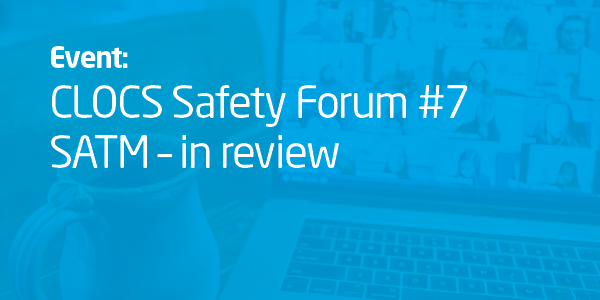
At the CLOCS Safety Forum #7 September 2021 – Site Access Traffic Marshals, we explored and discussed Site Access Traffic Marshals (SATMs), the vital role they play for all stakeholders and what more needs to be done.
The CLOCS Standard references the need for ‘competent site access traffic marshals’. It advises that clients shall ensure that the project team develops and implements a Construction Logistics Plan that requires competent site access traffic marshals, and that the Principal Contractors shall ensure they are appointed, outlining their duties including:
- manage site traffic in the context of the delivery management system
- check through general observation and sufficiently frequent spot checks that:
- vehicles and drivers meet the requirements of the CLOCS Standard
- that the specified route has been followed
CLOCS Safety Forum:
Forum attendees heard from two speakers – Ruth Trant, Head of QHSE at Alandale and David Guy, Construction Manager at Aecom, who spoke about the SATM role in detail, and their personal involvement, experience and insights.
The Forum then split into two groups to discuss the problems and challenges faced by the industry in enabling competent site access traffic marshals on every project.
- It was generally acknowledged by all that there was a lack of appreciation and recognition with poor rewards the norm. This inevitably leads to a high turnover of staff and the loss of knowledge and experience.
- There is often a disconnect between how the role is laid out in site plans and the reality of what happens on the ground.
- There is often a lack of consistency in how the role is conducted.
- Training is vital to ensure people are properly equipped to conduct the necessary checks to the right standard and to deal with the inevitable issues that crop up. However, it was felt that training was inconsistent and, in some cases, non-existent. Training should also cover communication and dealing with conflict as these are vital to ensure someone is successful in the role.
- Comments were made that the SATM role is still relatively new and has had fantastic positive impact so far. There are also many examples of great SATMs across the industry.
- Those in the role need more support and back up – their safety is paramount at all times. It can be a highly pressurised role and this is likely to have a large impact on job satisfaction and mental health. Should they have body-cams and/or CCTV at the gates, should police ever be called/involved?
- Senior management need to support those in the role and not look to undermine them. Is there a clear hierarchy of decision making? Who has the final decision on whether a non-compliant vehicle can enter site or not?
- We should do more to explore, identify and share best practice, e.g. use of bodycams, use of straps to guide pedestrians, etc.
- Should they have a consistent appearance, e.g. hi-viz and hard hat, consistent job title on PPE
Looking forward
It was clear that this is a vital subject and worthy of further discussion. It was suggested by many that there should be a follow up Safety Forum to revisit this vital role. This could include asking a Traffic Marshal to join the Forum and talk about their experiences, and also some examples of best practice from CLOCS Champions.
The CLOCS team will consider this and may also pass this matter to the CLOCS Working Group to discuss and agree on further action.
Immediate actions
- Talk to your SATMS and get feedback from them on what is working well and what could be improved. They perform such a vital role for the project so their feedback should be seen as important.
- Consider what support your SATMS currently get and how this can be improved. Make sure your Project Managers understand the importance of this role and the need to support, appreciate and recognise those in the role as appropriate.
- Understand what defined authority they have and check whether this is what actually happens on the ground or whether they are undermined by others.
- Think about the training you have in place and whether this is sufficient for this vital role.
- The CLOCS SATM is now available and further information can be found here.
- CITB also offer traffic marshal training and CLOCS will look into this to better understand their offering.
- Delegates are asked to share examples of best practice from their own companies and projects and these can be emailed to the CLOCS team at enquiries@clocs.org.uk.
- Fleet operators should consider the areas that they feel are vital and in need of being addressed and let the CLOCS team know.
Future Forums:
CLOCS Safety Forum #8 – Vulnerable Road User safety on the site boundary.
Thursday 2nd December 2021, 1pm via Zoom.
Understand the impact of site and fleet operations on vulnerable road users and the wider community adjacent to or near the site boundary, and the potential impact on surrounding areas, particularly blocked roads, diversions, pavements, excess signage, deliveries/parking, etc. Learn about consideration for all members of the community and hear about best practice already in place.
For CLOCS Champions only. Should you wish to attend the forum contact us via enquiries@clocs.org.uk to register and receive the details.


